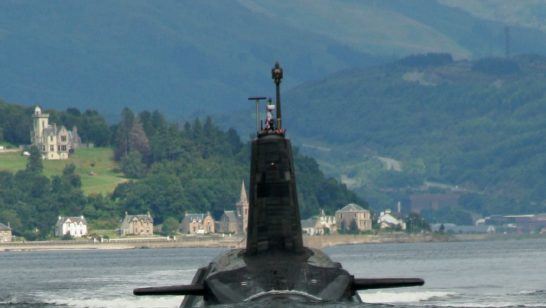
A report by Simon Lunn and Dr Ian Kearns prepared for the European Leadership Network meeting on 25 January 2011 analysing NATO’s Nuclear Policy after the Lisbon, with a focus on the Summit Documents and proposing the way ahead.
SUMMARY
NATO’s new Strategic Concept seeks to ensure the relevance of the Alliance to the security challenges of the 21st century. Its development involved a reassessment of the strategy of deterrence and defence including inevitably the role of nuclear weapons. This traditional assessment was however, accompanied by parallel concerns over the threat of proliferation and a consequent growth in support for reducing and eventually eliminating nuclear weapons. Alliance views on how the Concept should respond to these twin pressures differed sharply. Some members were reluctant, and in some cases absolutely opposed, to see any reduction in the nuclear role. Others wanted NATO to demonstrate support for the goal of a world free from nuclear weapons.
The documents adopted at Lisbon – the new Strategic Concept and the accompanying Declaration had to reconcile these views. This report provides an analysis of the treatment of NATO’s nuclear policy in both documents, provides an assessment of the outcome from Lisbon, and looks to future prospects. It is based partly on meetings at NATO with officials from national delegations and the International Staff in November and December 2010 and January 2011.
In the discussions surrounding the production of the two documents four elements were of particular significance: the language describing the purpose of nuclear weapons in NATO strategy; the need for the continued deployment in Europe of U.S nuclear warheads; the adoption of Missile Defence for the defence of territory as a NATO mission; and NATO’s role in disarmament, arms control and non proliferation. Each raises fundamental questions concerning the role of nuclear weapons in NATO strategy and each raises the question of relations with Russia.
Consultations between the three nuclear powers and with Germany eventually produced the compromises and trade off’s that satisfied national positions and facilitated consensus on the final Documents. As a consequence the language on nuclear policy is relatively brief. For some observers this indicates satisfaction with the status quo. For others it indicates the continued existence of differences in the key areas.
Several members had pressed for a nuclear posture review. Others were not so enthusiastic. The Lisbon documents resolved the problem by calling for a comprehensive review of the overall deterrence and defence posture. The scope and organisation of this review have still to be decided. At a minimum it should provide guidance on the requirements of each component of NATO strategy, identify the linkages between them and ensure the coherence of NATO’s collective effort. Time and circumstance will most likely determine that this will be achieved by using the work underway in the Committees with relevant competences and tying the components together.
A review of NATO’s nuclear requirements will need to take account of the existing study by the High Level Group which is currently in abeyance but also the specific guidance in the new Concept – namely the emphasis on the participation of allies in the peacetime basing of nuclear weapons and the statement that further reductions by NATO will require engaging the Russians on greater transparency and on the size of their stockpiles of short range nuclear weapons.
Both of these benchmarks effectively condition any change to existing arrangements and suggest that changes to NATO’s nuclear posture cannot be expected any time soon. This brings us full circle to the question of modernisation of the dual capable aircraft (DCA) and the probable need, pending the review, to extend the life cycles of those platforms assigned the nuclear mission in ways that minimise additional expenditure.
The size and location of the Russian stockpiles of sub strategic weapons is a major source of concern for NATO members, particularly to those in close proximity to Russia and has now moved to centre stage in NATO deliberations. However as of now Russia has shown little interest in discussing these systems other than pointing out they should be deployed only on home territory.
The U.S has stated that sub strategic systems will be included in future arms control negotiations with Russia but in what format is not clear. If at some stage these systems are included in bilateral negotiations the U.S will have to consult its Allies on NATO’s requirements. This highlights the need for close coordination between the definition of force posture and proposals for arms control negotiations and also the need for NATO to decide its requirements in advance of US-Russian negotiations on the issue.
The outcome of Lisbon in the field of nuclear policy was in the words of one NATO representative “enigmatic”. It confirmed the status quo but left the door open for future adjustments through the Review, and made the appropriate gesture to those seeking change with the proposed new work of the Disarmament Committee. Changes will depend on developments in the strategic environment and will only arrive when there is unanimous agreement that they serve NATO’s collective security interests.
In assessing future prospects it is important to remember the specific characteristics of the NATO nuclear policy process which produce an innate conservatism towards nuclear policy. This traditional approach, the heavy hand of consensus and the competition of other more pressing issues explain why the nuclear issue normally enjoys a quiet life. They also explain why formal decisions frequently do not meet the expectations of those who follow these issues in the “outside” world.
But this may be changing as people realise that traditional approaches and the status quo may not be adequate to deal with the threat of proliferation. It may be necessary to look beyond the narrow approach of deterrence and defence and give priority to non proliferation diplomacy even if this has consequences for NATO’s chosen deterrence posture.
The ELN is well placed to begin to develop and build this approach.
The opinions articulated above represent the views of the author(s), and do not necessarily reflect the position of the European Leadership Network or any of its members. The ELN’s aim is to encourage debates that will help develop Europe’s capacity to address the pressing foreign, defence, and security challenges of our time.



